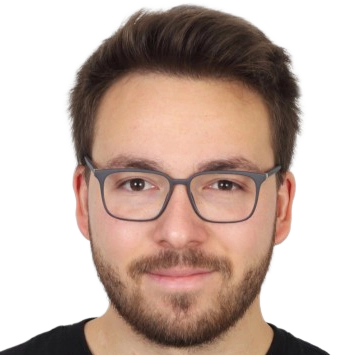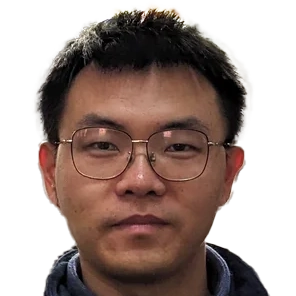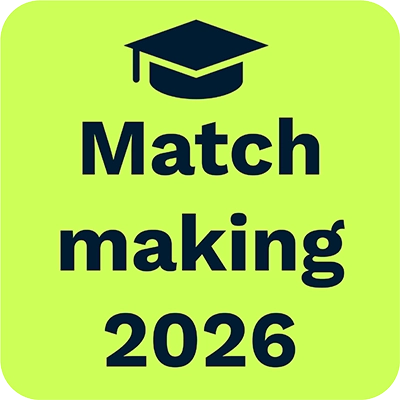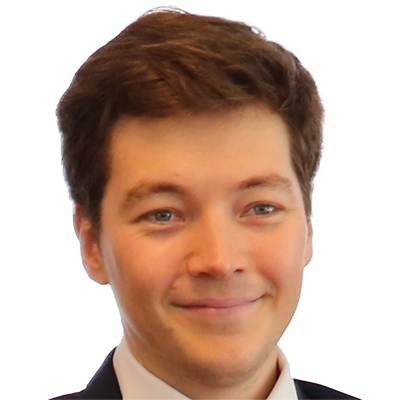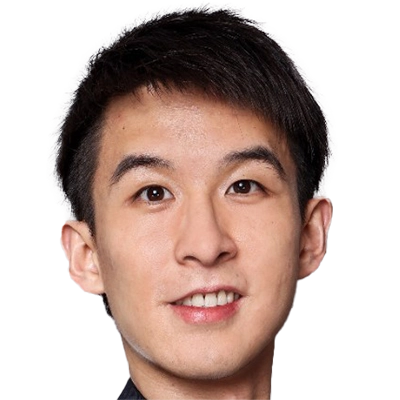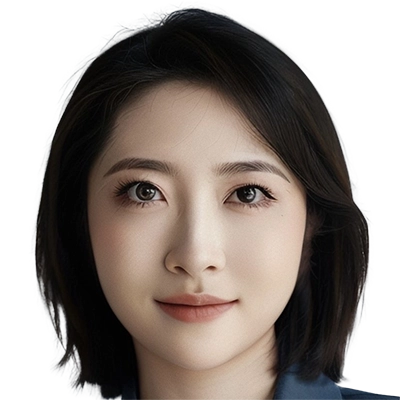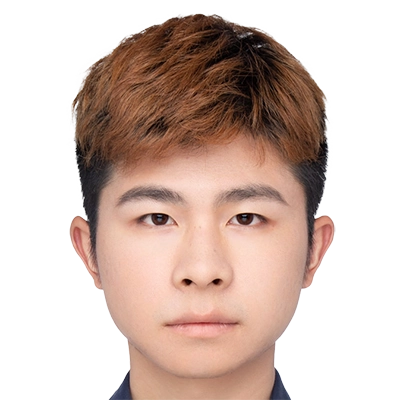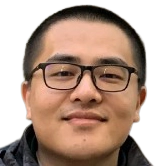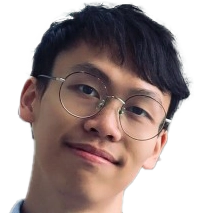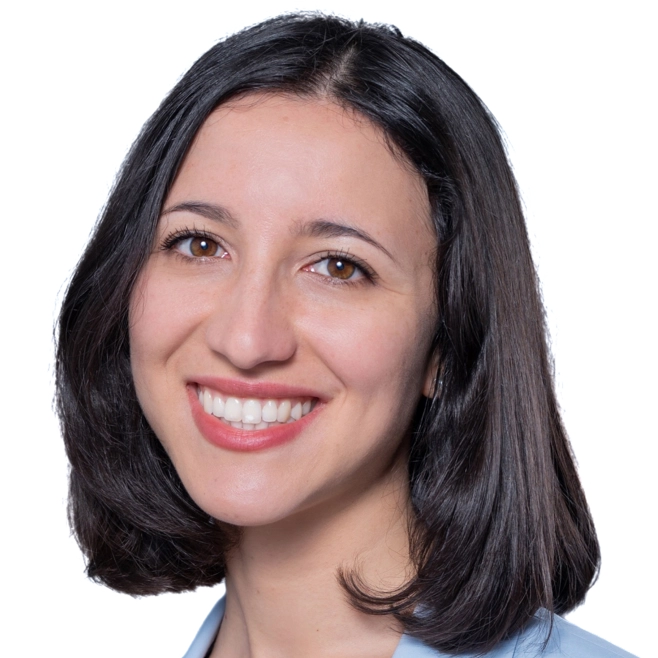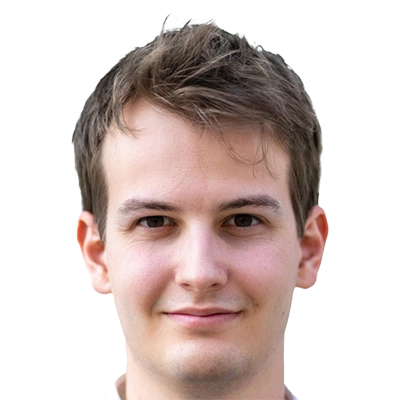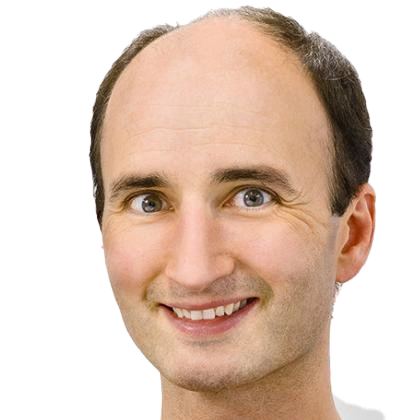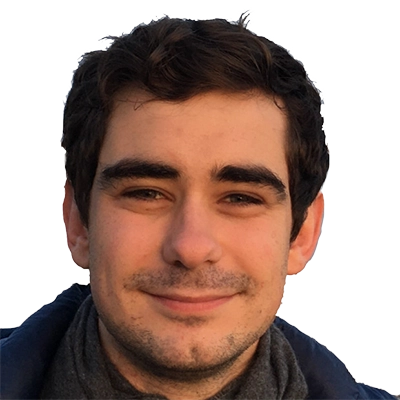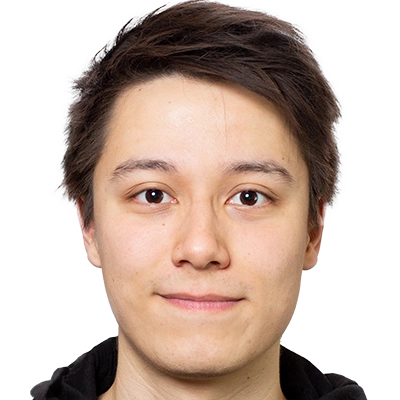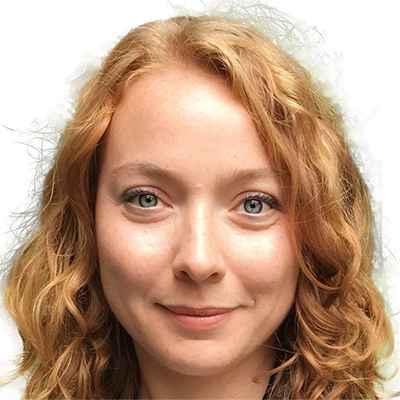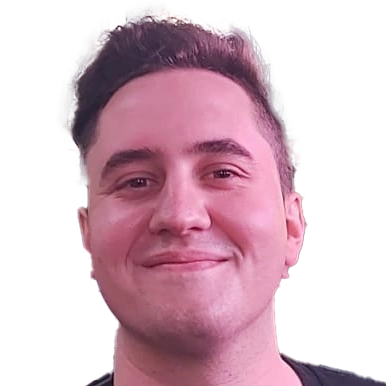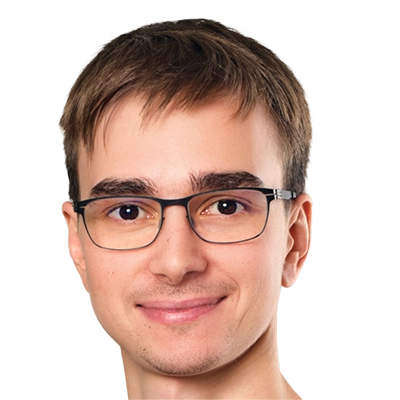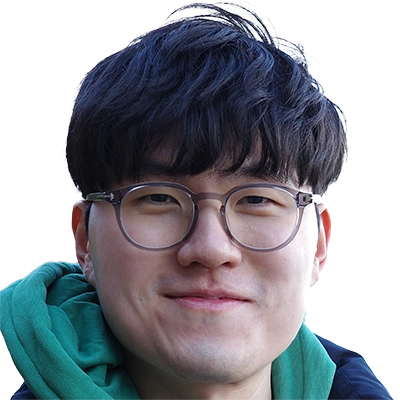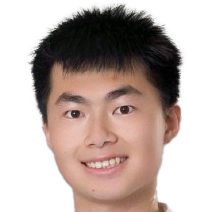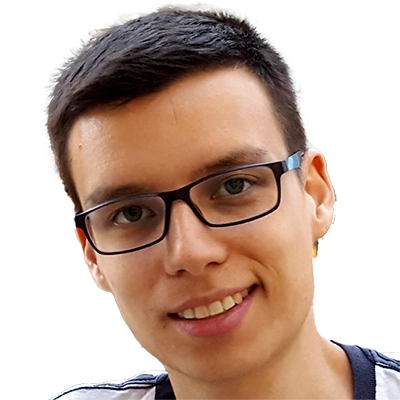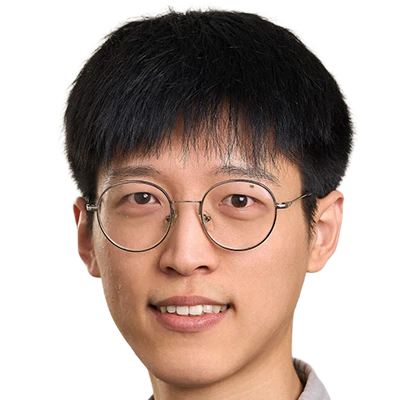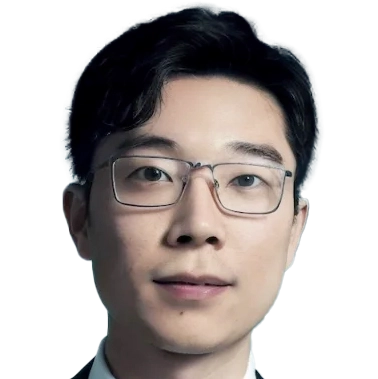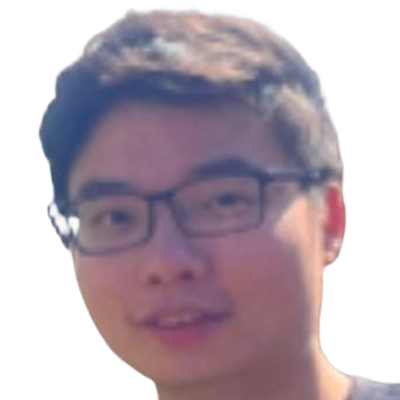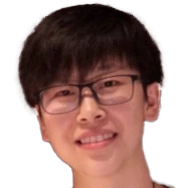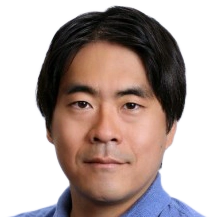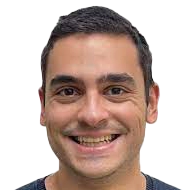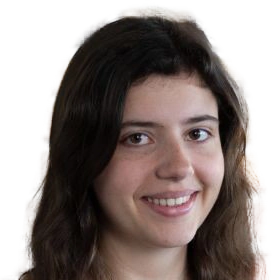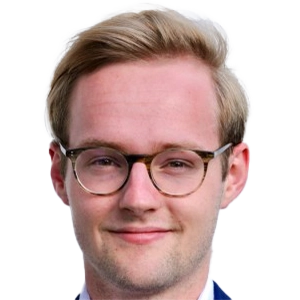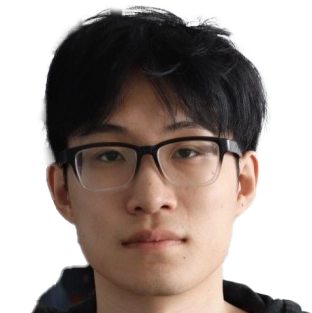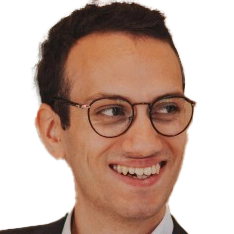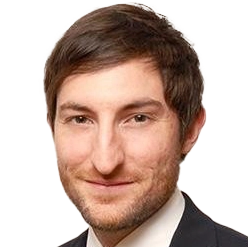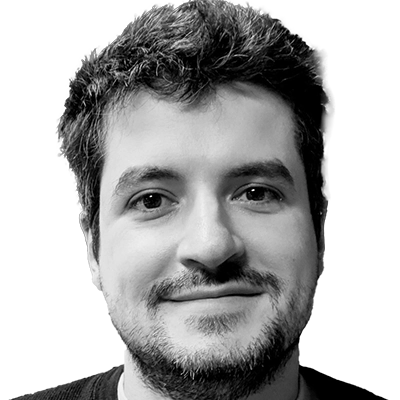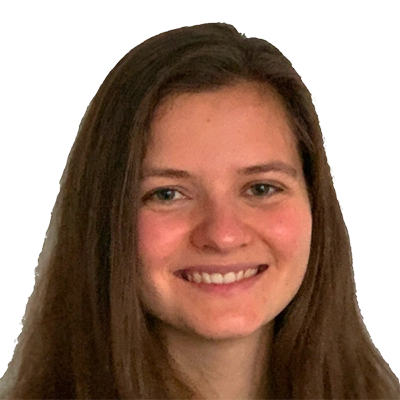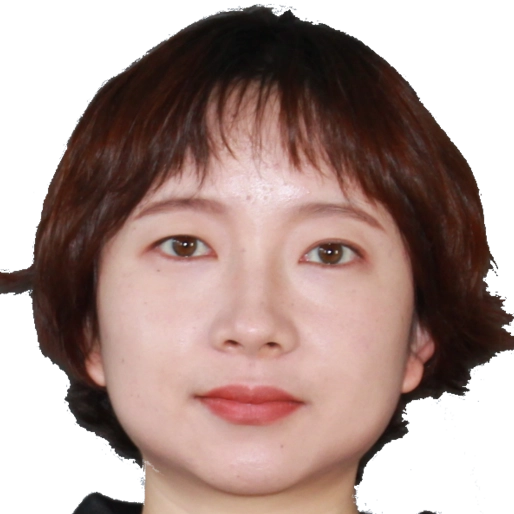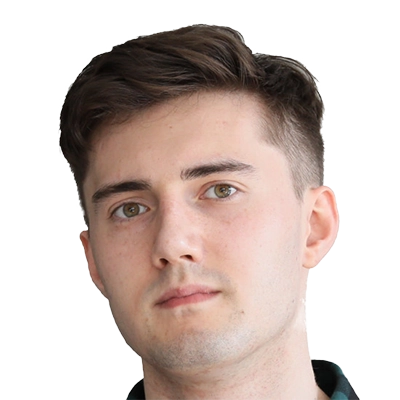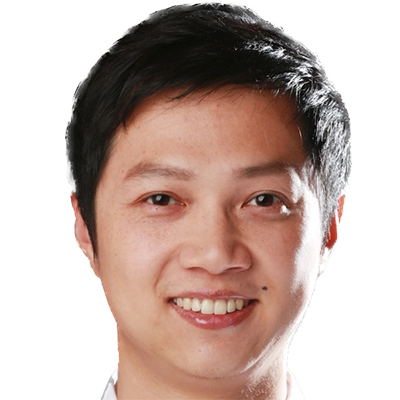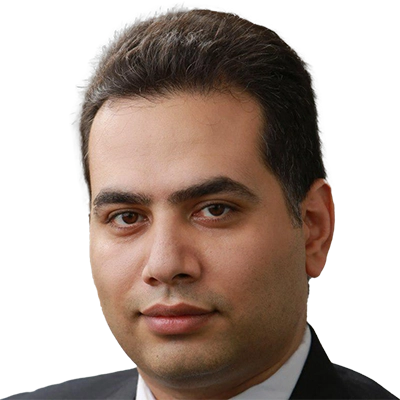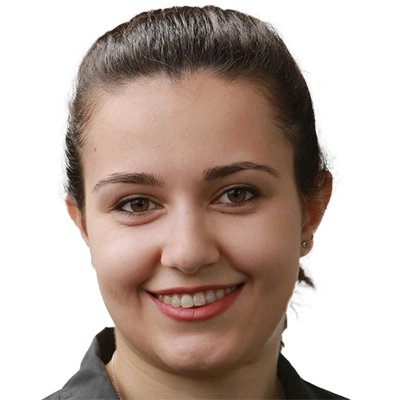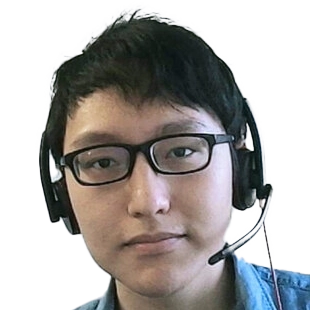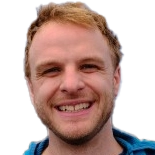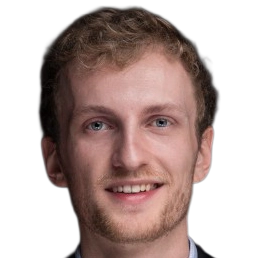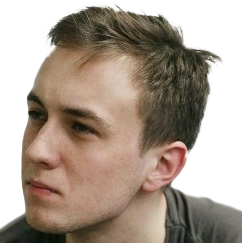10.06.2025
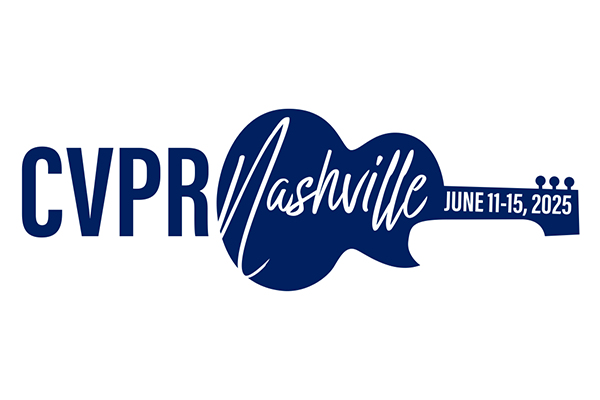
MCML at CVPR 2025: 35 Accepted Papers (29 Main, and 6 Workshops)
IEEE/CVF Conference on Computer Vision and Pattern Recognition (CVPR 2025). Nashville, TN, USA, 11.06.2025–15.06.2025
We are happy to announce that MCML researchers have contributed a total of 35 papers to CVPR 2025: 29 Main, and 6 Workshop papers. Congrats to our researchers!
Main Track (29 papers)
Continuous, Subject-Specific Attribute Control in T2I Models by Identifying Semantic Directions.
CVPR 2025 - IEEE/CVF Conference on Computer Vision and Pattern Recognition. Nashville, TN, USA, Jun 11-15, 2025. DOI GitHub
Abstract
In recent years, advances in text-to-image (T2I) diffusion models have substantially elevated the quality of their generated images. However, achieving fine-grained control over attributes remains a challenge due to the limitations of natural language prompts (such as no continuous set of intermediate descriptions existing between person'' and old person’’). Even though many methods were introduced that augment the model or generation process to enable such control, methods that do not require a fixed reference image are limited to either enabling global fine-grained attribute expression control or coarse attribute expression control localized to specific subjects, not both simultaneously. We show that there exist directions in the commonly used token-level CLIP text embeddings that enable fine-grained subject-specific control of high-level attributes in text-to-image models. Based on this observation, we introduce one efficient optimization-free and one robust optimization-based method to identify these directions for specific attributes from contrastive text prompts. We demonstrate that these directions can be used to augment the prompt text input with fine-grained control over attributes of specific subjects in a compositional manner (control over multiple attributes of a single subject) without having to adapt the diffusion model.
MCML Authors
From Alexnet to Transformers: Measuring the Non-linearity of Deep Neural Networks with Affine Optimal Transport.
CVPR 2025 - IEEE/CVF Conference on Computer Vision and Pattern Recognition. Nashville, TN, USA, Jun 11-15, 2025. DOI
Abstract
In the last decade, we have witnessed the introduction of several novel deep neural network (DNN) architectures exhibiting ever-increasing performance across diverse tasks. Explaining the upward trend of their performance, however, remains difficult as different DNN architectures of comparable depth and width – common factors associated with their expressive power – may exhibit a drastically different performance even when trained on the same dataset. In this paper, we introduce the concept of the non-linearity signature of DNN, the first theoretically sound solution for approximately measuring the non-linearity of deep neural networks. Built upon a score derived from closed-form optimal transport mappings, this signature provides a better understanding of the inner workings of a wide range of DNN architectures and learning paradigms, with a particular emphasis on the computer vision task. We provide extensive experimental results that highlight the practical usefulness of the proposed non-linearity signature and its potential for long-reaching implications.
MCML Authors
FedBiP: Heterogeneous One-Shot Federated Learning with Personalized Latent Diffusion Models.
CVPR 2025 - IEEE/CVF Conference on Computer Vision and Pattern Recognition. Nashville, TN, USA, Jun 11-15, 2025. DOI
Abstract
One-Shot Federated Learning (OSFL), a special decentralized machine learning paradigm, has recently gained significant attention. OSFL requires only a single round of client data or model upload, which reduces communication costs and mitigates privacy threats compared to traditional FL. Despite these promising prospects, existing methods face challenges due to client data heterogeneity and limited data quantity when applied to real-world OSFL systems. Recently, Latent Diffusion Models (LDM) have shown remarkable advancements in synthesizing high-quality images through pretraining on large-scale datasets, thereby presenting a potential solution to overcome these issues. However, directly applying pretrained LDM to heterogeneous OSFL results in significant distribution shifts in synthetic data, leading to performance degradation in classification models trained on such data. This issue is particularly pronounced in rare domains, such as medical imaging, which are underrepresented in LDM’s pretraining data. To address this challenge, we propose Federated Bi-Level Personalization (FedBiP), which personalizes the pretrained LDM at both instance-level and concept-level. Hereby, FedBiP synthesizes images following the client’s local data distribution without compromising the privacy regulations. FedBiP is also the first approach to simultaneously address feature space heterogeneity and client data scarcity in OSFL. Our method is validated through extensive experiments on three OSFL benchmarks with feature space heterogeneity, as well as on challenging medical and satellite image datasets with label heterogeneity. The results demonstrate the effectiveness of FedBiP, which substantially outperforms other OSFL methods.
MCML Authors
Parametric Point Cloud Completion for Polygonal Surface Reconstruction.
CVPR 2025 - IEEE/CVF Conference on Computer Vision and Pattern Recognition. Nashville, TN, USA, Jun 11-15, 2025. DOI GitHub
Abstract
Existing polygonal surface reconstruction methods heavily depend on input completeness and struggle with incomplete point clouds. We argue that while current point cloud completion techniques may recover missing points, they are not optimized for polygonal surface reconstruction, where the parametric representation of underlying surfaces remains overlooked. To address this gap, we introduce parametric completion, a novel paradigm for point cloud completion, which recovers parametric primitives instead of individual points to convey high-level geometric structures. Our presented approach, PaCo, enables high-quality polygonal surface reconstruction by leveraging plane proxies that encapsulate both plane parameters and inlier points, proving particularly effective in challenging scenarios with highly incomplete data. Comprehensive evaluations of our approach on the ABC dataset establish its effectiveness with superior performance and set a new standard for polygonal surface reconstruction from incomplete data.
MCML Authors
Nonisotropic Gaussian Diffusion for Realistic 3D Human Motion Prediction.
CVPR 2025 - IEEE/CVF Conference on Computer Vision and Pattern Recognition. Nashville, TN, USA, Jun 11-15, 2025. DOI GitHub
Abstract
Probabilistic human motion prediction aims to forecast multiple possible future movements from past observations. While current approaches report high diversity and realism, they often generate motions with undetected limb stretching and jitter. To address this, we introduce SkeletonDiffusion, a latent diffusion model that embeds an explicit inductive bias on the human body within its architecture and training. Our model is trained with a novel nonisotropic Gaussian diffusion formulation that aligns with the natural kinematic structure of the human skeleton. Results show that our approach outperforms conventional isotropic alternatives, consistently generating realistic predictions while avoiding artifacts such as limb distortion. Additionally, we identify a limitation in commonly used diversity metrics, which may inadvertently favor models that produce inconsistent limb lengths within the same sequence. SkeletonDiffusion sets a new benchmark on three real-world datasets, outperforming various baselines across multiple evaluation metrics.
MCML Authors
Finsler Multi-Dimensional Scaling: Manifold Learning for Asymmetric Dimensionality Reduction and Embedding.
CVPR 2025 - IEEE/CVF Conference on Computer Vision and Pattern Recognition. Nashville, TN, USA, Jun 11-15, 2025. DOI
Abstract
Dimensionality reduction is a fundamental task that aims to simplify complex data by reducing its feature dimensionality while preserving essential patterns, with core applications in data analysis and visualisation. To preserve the underlying data structure, multi-dimensional scaling (MDS) methods focus on preserving pairwise dissimilarities, such as distances. They optimise the embedding to have pairwise distances as close as possible to the data dissimilarities. However, the current standard is limited to embedding data in Riemannian manifolds. Motivated by the lack of asymmetry in the Riemannian metric of the embedding space, this paper extends the MDS problem to a natural asymmetric generalisation of Riemannian manifolds called Finsler manifolds. Inspired by Euclidean spaces, we define a canonical Finsler space for embedding asymmetric data. Due to its simplicity with respect to geodesics, data representation in this space is both intuitive and simple to analyse. We demonstrate that our generalisation benefits from the same theoretical convergence guarantees. We reveal the effectiveness of our Finsler embedding across various types of non-symmetric data, highlighting its value in applications such as data visualisation, dimensionality reduction, directed graph embedding, and link prediction.
MCML Authors
How to Merge Your Multimodal Models Over Time?
CVPR 2025 - IEEE/CVF Conference on Computer Vision and Pattern Recognition. Nashville, TN, USA, Jun 11-15, 2025. DOI
Abstract
Model merging combines multiple expert models - finetuned from a base foundation model on diverse tasks and domains - into a single, more capable model. However, most existing model merging approaches assume that all experts are available simultaneously. In reality, new tasks and domains emerge progressively over time, requiring strategies to integrate the knowledge of expert models as they become available: a process we call temporal model merging. The temporal dimension introduces unique challenges not addressed in prior work, raising new questions such as: when training for a new task, should the expert model start from the merged past experts or from the original base model? Should we merge all models at each time step? Which merging techniques are best suited for temporal merging? Should different strategies be used to initialize the training and deploy the model? To answer these questions, we propose a unified framework called TIME - Temporal Integration of Model Expertise - which defines temporal model merging across three axes: (1) Initialization Phase, (2) Deployment Phase, and (3) Merging Technique. Using TIME, we study temporal model merging across model sizes, compute budgets, and learning horizons on the FoMo-in-Flux benchmark. Our comprehensive suite of experiments across TIME allows us to uncover key insights for temporal model merging, offering a better understanding of current challenges and best practices for effective temporal model merging.
MCML Authors
Scene-Centric Unsupervised Panoptic Segmentation.
CVPR 2025 - IEEE/CVF Conference on Computer Vision and Pattern Recognition. Nashville, TN, USA, Jun 11-15, 2025. DOI GitHub
Abstract
Unsupervised panoptic segmentation aims to partition an image into semantically meaningful regions and distinct object instances without training on manually annotated data. In contrast to prior work on unsupervised panoptic scene understanding, we eliminate the need for object-centric training data, enabling the unsupervised understanding of complex scenes. To that end, we present the first unsupervised panoptic method that directly trains on scene-centric imagery. In particular, we propose an approach to obtain high-resolution panoptic pseudo labels on complex scene-centric data combining visual representations, depth, and motion cues. Utilizing both pseudo-label training and a panoptic self-training strategy yields a novel approach that accurately predicts panoptic segmentation of complex scenes without requiring any human annotations. Our approach significantly improves panoptic quality, e.g., surpassing the recent state of the art in unsupervised panoptic segmentation on Cityscapes by 9.4% points in PQ.
MCML Authors
ReVisionLLM: Recursive Vision-Language Model for Temporal Grounding in Hour-Long Videos.
CVPR 2025 - IEEE/CVF Conference on Computer Vision and Pattern Recognition. Nashville, TN, USA, Jun 11-15, 2025. DOI GitHub
Abstract
Large language models (LLMs) excel at retrieving information from lengthy text, but their vision-language counterparts (VLMs) face difficulties with hour-long videos, especially for temporal grounding. Specifically, these VLMs are constrained by frame limitations, often losing essential temporal details needed for accurate event localization in extended video content. We propose ReVisionLLM, a recursive vision-language model designed to locate events in hour-long videos. Inspired by human search strategies, our model initially targets broad segments of interest, progressively revising its focus to pinpoint exact temporal boundaries. Our model can seamlessly handle videos of vastly different lengths, from minutes to hours. We also introduce a hierarchical training strategy that starts with short clips to capture distinct events and progressively extends to longer videos. To our knowledge, ReVisionLLM is the first VLM capable of temporal grounding in hour-long videos, outperforming previous state-of-the-art methods across multiple datasets by a significant margin (+2.6% R1@0.1 on MAD).
MCML Authors
COSMOS: Cross-Modality Self-Distillation for Vision Language Pre-training.
CVPR 2025 - IEEE/CVF Conference on Computer Vision and Pattern Recognition. Nashville, TN, USA, Jun 11-15, 2025. DOI
Abstract
Vision-Language Models (VLMs) trained with contrastive loss have achieved significant advancements in various vision and language tasks. However, the global nature of contrastive loss makes VLMs focus predominantly on foreground objects, neglecting other crucial information in the image, which limits their effectiveness in downstream tasks. To address these challenges, we propose COSMOS: CrOSs-MOdality Self-distillation for vision-language pre-training that integrates a novel text-cropping strategy and cross-attention module into a self-supervised learning framework. We create global and local views of images and texts (i.e., multi-modal augmentations), which are essential for self-distillation in VLMs. We further introduce a cross-attention module, enabling COSMOS to learn comprehensive cross-modal representations optimized via a cross-modality self-distillation loss. COSMOS consistently outperforms previous strong baselines on various zero-shot downstream tasks, including retrieval, classification, and semantic segmentation. Additionally, it surpasses CLIP-based models trained on larger datasets in visual perception and contextual understanding tasks.
MCML Authors

Iuliana Georgescu
Dr.
* Former Member
Multimodal Pragmatic Jailbreak on Text-to-image Models.
CVPR 2025 - 2nd Workshop on Responsible Generative AI at IEEE/CVF Conference on Computer Vision and Pattern Recognition. Nashville, TN, USA, Jun 11-15, 2025. Best Paper Award. URL GitHub
Abstract
Diffusion models have recently achieved remarkable advancements in terms of image quality and fidelity to textual prompts. Concurrently, the safety of such generative models has become an area of growing concern. This work introduces a novel type of jailbreak, which triggers T2I models to generate the image with visual text, where the image and the text, although considered to be safe in isolation, combine to form unsafe content. To systematically explore this phenomenon, we propose a dataset to evaluate the current diffusion-based text-to-image (T2I) models under such jailbreak. We benchmark nine representative T2I models, including two closed-source commercial models. Experimental results reveal a concerning tendency to produce unsafe content: all tested models suffer from such type of jailbreak, with rates of unsafe generation ranging from around 10% to 70% where DALLE 3 demonstrates almost the highest unsafety. In real-world scenarios, various filters such as keyword blocklists, customized prompt filters, and NSFW image filters, are commonly employed to mitigate these risks. We evaluate the effectiveness of such filters against our jailbreak and found that, while these filters may be effective for single modality detection, they fail to work against our jailbreak. We also investigate the underlying reason for such jailbreaks, from the perspective of text rendering capability and training data. Our work provides a foundation for further development towards more secure and reliable T2I models.
MCML Authors
GCE-Pose: Global Context Enhancement for Category-level Object Pose Estimation.
CVPR 2025 - IEEE/CVF Conference on Computer Vision and Pattern Recognition. Nashville, TN, USA, Jun 11-15, 2025. DOI GitHub
Abstract
A key challenge in model-free category-level pose estimation is the extraction of contextual object features that generalize across varying instances within a specific category. Recent approaches leverage foundational features to capture semantic and geometry cues from data. However, these approaches fail under partial visibility. We overcome this with a first-complete-then-aggregate strategy for feature extraction utilizing class priors. In this paper, we present GCE-Pose, a method that enhances pose estimation for novel instances by integrating category-level global context prior. GCE-Pose performs semantic shape reconstruction with a proposed Semantic Shape Reconstruction (SSR) module. Given an unseen partial RGB-D object instance, our SSR module reconstructs the instance’s global geometry and semantics by deforming category-specific 3D semantic prototypes through a learned deep Linear Shape Model. We further introduce a Global Context Enhanced (GCE) feature fusion module that effectively fuses features from partial RGB-D observations and the reconstructed global context. Extensive experiments validate the impact of our global context prior and the effectiveness of the GCE fusion module, demonstrating that GCE-Pose significantly outperforms existing methods on challenging real-world datasets HouseCat6D and NOCS-REAL275.
MCML Authors
A Tale of Two Classes: Adapting Supervised Contrastive Learning to Binary Imbalanced Datasets.
CVPR 2025 - IEEE/CVF Conference on Computer Vision and Pattern Recognition. Nashville, TN, USA, Jun 11-15, 2025. DOI
Abstract
Supervised contrastive learning (SupCon) has proven to be a powerful alternative to the standard cross-entropy loss for classification of multi-class balanced datasets. However, it struggles to learn well-conditioned representations of datasets with long-tailed class distributions. This problem is potentially exacerbated for binary imbalanced distributions, which are commonly encountered during many real-world problems such as medical diagnosis. In experiments on seven binary datasets of natural and medical images, we show that the performance of SupCon decreases with increasing class imbalance. To substantiate these findings, we introduce two novel metrics that evaluate the quality of the learned representation space. By measuring the class distribution in local neighborhoods, we are able to uncover structural deficiencies of the representation space that classical metrics cannot detect. Informed by these insights, we propose two new supervised contrastive learning strategies tailored to binary imbalanced datasets that improve the structure of the representation space and increase downstream classification accuracy over standard SupCon by up to 35%. We make our code available.
MCML Authors
MM-OR: A Large Multimodal Operating Room Dataset for Semantic Understanding of High-Intensity Surgical Environments.
CVPR 2025 - IEEE/CVF Conference on Computer Vision and Pattern Recognition. Nashville, TN, USA, Jun 11-15, 2025. DOI GitHub
Abstract
Operating rooms (ORs) are complex, high-stakes environments requiring precise understanding of interactions among medical staff, tools, and equipment for enhancing surgical assistance, situational awareness, and patient safety. Current datasets fall short in scale, realism and do not capture the multimodal nature of OR scenes, limiting progress in OR modeling. To this end, we introduce MM-OR, a realistic and large-scale multimodal spatiotemporal OR dataset, and the first dataset to enable multimodal scene graph generation. MM-OR captures comprehensive OR scenes containing RGB-D data, detail views, audio, speech transcripts, robotic logs, and tracking data and is annotated with panoptic segmentations, semantic scene graphs, and downstream task labels. Further, we propose MM2SG, the first multimodal large vision-language model for scene graph generation, and through extensive experiments, demonstrate its ability to effectively leverage multimodal inputs. Together, MM-OR and MM2SG establish a new benchmark for holistic OR understanding, and open the path towards multimodal scene analysis in complex, high-stakes environments.
MCML Authors
Semantic Library Adaptation: LoRA Retrieval and Fusion for Open-Vocabulary Semantic Segmentation.
CVPR 2025 - IEEE/CVF Conference on Computer Vision and Pattern Recognition. Nashville, TN, USA, Jun 11-15, 2025. DOI
Abstract
Open-vocabulary semantic segmentation models associate vision and text to label pixels from an undefined set of classes using textual queries, providing versatile performance on novel datasets. However, large shifts between training and test domains degrade their performance, requiring fine-tuning for effective real-world application. We introduce Semantic Library Adaptation (SemLa), a novel framework for training-free, test-time domain adaptation. SemLa leverages a library of LoRA-based adapters indexed with CLIP embeddings, dynamically merging the most relevant adapters based on proximity to the target domain in the embedding space. This approach constructs an ad-hoc model tailored to each specific input without additional training. Our method scales efficiently, enhances explainability by tracking adapter contributions, and inherently protects data privacy, making it ideal for sensitive applications. Comprehensive experiments on an 18-domain benchmark built over 10 standard datasets demonstrate SemLa’s superior adaptability and performance across diverse settings, establishing a new standard in domain adaptation for open-vocabulary semantic segmentation.
MCML Authors
Higher-Order Ratio Cycles for Fast and Globally Optimal Shape Matching.
CVPR 2025 - IEEE/CVF Conference on Computer Vision and Pattern Recognition. Nashville, TN, USA, Jun 11-15, 2025. DOI
Abstract
In this work we address various shape matching problems that can be cast as finding cyclic paths in a product graph. This involves for example 2D-3D shape matching, 3D shape matching, or the matching of a contour to a graph. In this context, matchings are typically obtained as the minimum cost cycle in the product graph. Instead, inspired by related works on model-based image segmentation, we consider minimum ratio cycles, which we combine with the recently introduced conjugate product graph in order to allow for higher-order matching costs. With that, on the one hand we avoid the bias of obtaining matchings that involve fewer/shorter edges, while on the other hand being able to impose powerful geometric regularisation, e.g. to avoid zig-zagging. In our experiments we demonstrate that this not only leads to improved matching accuracy in most cases, but also to significantly reduced runtimes (up to two orders of magnitude, depending on the setting). Our GPU implementation will be made publicly available upon acceptance.
MCML Authors
Context-Aware Multimodal Pretraining.
CVPR 2025 - IEEE/CVF Conference on Computer Vision and Pattern Recognition. Nashville, TN, USA, Jun 11-15, 2025. DOI
Abstract
Large-scale multimodal representation learning successfully optimizes for zero-shot transfer at test time. Yet the standard pretraining paradigm (contrastive learning on large amounts of image-text data) does not explicitly encourage representations to support few-shot adaptation. In this work, we propose a simple, but carefully designed extension to multimodal pretraining which enables representations to accommodate additional context. Using this objective, we show that vision-language models can be trained to exhibit significantly increased few-shot adaptation: across 21 downstream tasks, we find up to four-fold improvements in test-time sample efficiency, and average few-shot adaptation gains of over 5%, while retaining zero-shot generalization performance across model scales and training durations. In particular, equipped with simple, training-free, metric-based adaptation mechanisms, our representations easily surpass more complex and expensive optimization-based schemes, vastly simplifying generalization to new domains.
MCML Authors
4Deform: Neural Surface Deformation for Robust Shape Interpolation.
CVPR 2025 - IEEE/CVF Conference on Computer Vision and Pattern Recognition. Nashville, TN, USA, Jun 11-15, 2025. DOI
Abstract
Generating realistic intermediate shapes between non-rigidly deformed shapes is a challenging task in computer vision, especially with unstructured data (e.g., point clouds) where temporal consistency across frames is lacking, and topologies are changing. Most interpolation methods are designed for structured data (i.e., meshes) and do not apply to real-world point clouds. In contrast, our approach, 4Deform, leverages neural implicit representation (NIR) to enable free topology changing shape deformation. Unlike previous mesh-based methods that learn vertex-based deformation fields, our method learns a continuous velocity field in Euclidean space. Thus, it is suitable for less structured data such as point clouds. Additionally, our method does not require intermediate-shape supervision during training; instead, we incorporate physical and geometrical constraints to regularize the velocity field. We reconstruct intermediate surfaces using a modified level-set equation, directly linking our NIR with the velocity field. Experiments show that our method significantly outperforms previous NIR approaches across various scenarios (e.g., noisy, partial, topology-changing, non-isometric shapes) and, for the first time, enables new applications like 4D Kinect sequence upsampling and real-world high-resolution mesh deformation.
MCML Authors
It's a (Blind) Match! Towards Vision-Language Correspondence without Parallel Data.
CVPR 2025 - IEEE/CVF Conference on Computer Vision and Pattern Recognition. Nashville, TN, USA, Jun 11-15, 2025. DOI
Abstract
The platonic representation hypothesis suggests that vision and language embeddings become more homogeneous as model and dataset sizes increase. In particular, pairwise distances within each modality become more similar. This suggests that as foundation models mature, it may become possible to match vision and language embeddings in a fully unsupervised fashion, i.e., without parallel data. We present the first study towards this prospect, and investigate conformity of existing vision and language foundation models in the context of ‘blind’ matching. First, we formulate unsupervised matching as a quadratic assignment problem and introduce a novel heuristic that outperforms previous solvers. We also develop a technique to find optimal matching problems, for which a non-trivial match is very likely. Second, we conduct an extensive study deploying a range of vision and language models on four datasets. Our analysis reveals that for many problem instances, vision and language representations can be indeed matched without supervision. This finding opens possibility for exciting applications embedding semantic knowledge into other modalities. As a showcase, we demonstrate a proof-of-concept unsupervised classifier, which achieves non-trivial classification accuracy without any image-text annotation.
MCML Authors
Diff2Flow: Training Flow Matching Models via Diffusion Model Alignment.
CVPR 2025 - IEEE/CVF Conference on Computer Vision and Pattern Recognition. Nashville, TN, USA, Jun 11-15, 2025. DOI
Abstract
Recent advancements in diffusion models have established new benchmarks in both generative tasks and downstream applications. In contrast, flow matching models have shown promising improvements in performance but have not been as extensively explored, particularly due to the difficulty of inheriting knowledge from a pretrained diffusion prior foundation model.In this work, we propose a novel method to bridge the gap between pretrained diffusion models and flow matching models by aligning their trajectories and matching their objectives. Our approach mathematically formalizes this alignment and enables the efficient transfer of knowledge from diffusion priors to flow matching models. We demonstrate that our method outperforms traditional diffusion and flow matching finetuning, achieving competitive results across a variety of tasks.
MCML Authors
PRaDA: Projective Radial Distortion Averaging.
CVPR 2025 - IEEE/CVF Conference on Computer Vision and Pattern Recognition. Nashville, TN, USA, Jun 11-15, 2025. DOI
Abstract
We tackle the problem of automatic calibration of radially distorted cameras in challenging conditions.Accurately determining distortion parameters typically requires either 1) solving the full Structure from Motion (SfM) problem involving camera poses, 3D points, and the distortion parameters, which is only possible if many images with sufficient overlap are provided, or 2) relying heavily on learning-based methods that are comparatively less accurate.In this work, we demonstrate that distortion calibration can be decoupled from 3D reconstruction, maintaining the accuracy of SfM-based methods while avoiding many of the associated complexities. This is achieved by working in Projective Space, where the geometry is unique up to a homography, which encapsulates all camera parameters except for distortion.Our proposed method, Projective Radial Distortion Averaging, averages multiple distortion estimates in a fully projective framework without creating 3d points and full bundle adjustment. By relying on pairwise projective relations, our methods support any feature-matching approaches without constructing point tracks across multiple images.
MCML Authors
CleanDIFT: Diffusion Features without Noise.
CVPR 2025 - IEEE/CVF Conference on Computer Vision and Pattern Recognition. Nashville, TN, USA, Jun 11-15, 2025. DOI
Abstract
Internal features from large-scale pre-trained diffusion models have recently been established as powerful semantic descriptors for a wide range of downstream tasks. Works that use these features generally need to add noise to images before passing them through the model to obtain the semantic features, as the models do not offer the most useful features when given images with little to no noise. We show that this noise has a critical impact on the usefulness of these features that cannot be remedied by ensembling with different random noises. We address this issue by introducing a lightweight, unsupervised fine-tuning method that enables diffusion backbones to provide high-quality, noise-free semantic features. We show that these features readily outperform previous diffusion features by a wide margin in a wide variety of extraction setups and downstream tasks, offering better performance than even ensemble-based methods at a fraction of the cost.
MCML Authors
AnyCam: Learning to Recover Camera Poses and Intrinsics from Casual Videos.
CVPR 2025 - IEEE/CVF Conference on Computer Vision and Pattern Recognition. Nashville, TN, USA, Jun 11-15, 2025. DOI
Abstract
Estimating camera motion and intrinsics from casual videos is a core challenge in computer vision. Traditional bundle-adjustment based methods, such as SfM and SLAM, struggle to perform reliably on arbitrary data. Although specialized SfM approaches have been developed for handling dynamic scenes, they either require intrinsics or computationally expensive test-time optimization and often fall short in performance. Recently, methods like Dust3r have reformulated the SfM problem in a more data-driven way. While such techniques show promising results, they are still 1) not robust towards dynamic objects and 2) require labeled data for supervised training.As an alternative, we propose AnyCam, a fast transformer model that directly estimates camera poses and intrinsics from a dynamic video sequence in feed-forward fashion. Our intuition is that such a network can learn strong priors over realistic camera motions. To scale up our training, we rely on an uncertainty-based loss formulation and pre-trained depth and flow networks instead of motion or trajectory supervision. This allows us to use diverse, unlabelled video datasets obtained mostly from YouTube. Additionally, we ensure that the predicted trajectory does not accumulate drift over time through a lightweight trajectory refinement step. We test AnyCam on established datasets, where it delivers accurate camera poses and intrinsics both qualitatively and quantitatively. Furthermore, even with trajectory refinement, AnyCam is significantly faster than existing works for SfM in dynamic settings. Finally, by combining camera information, uncertainty, and depth, our model can produce high-quality 4D pointclouds in a feed-forward fashion.
MCML Authors
FLAIR: VLM with Fine-grained Language-informed Image Representations.
CVPR 2025 - IEEE/CVF Conference on Computer Vision and Pattern Recognition. Nashville, TN, USA, Jun 11-15, 2025. DOI GitHub
Abstract
CLIP has shown impressive results in aligning images and texts at scale. However, its ability to capture detailed visual features remains limited because CLIP matches images and texts at a global level. To address this issue, we propose FLAIR, Fine-grained Language-informed Image Representations, an approach that utilizes long and detailed image descriptions to learn localized image embeddings. By sampling diverse sub-captions that describe fine-grained details about an image, we train our vision-language model to produce not only global embeddings but also text-specific image representations. Our model introduces text-conditioned attention pooling on top of local image tokens to produce fine-grained image representations that excel at retrieving detailed image content. We achieve state-of-the-art performance on both, existing multimodal retrieval benchmarks, as well as, our newly introduced fine-grained retrieval task which evaluates vision-language models’ ability to retrieve partial image content. Furthermore, our experiments demonstrate the effectiveness of FLAIR trained on 30M image-text pairs in capturing fine-grained visual information, including zero-shot semantic segmentation, outperforming models trained on billions of pairs.
MCML Authors

Iuliana Georgescu
Dr.
* Former Member
EchoMatch: Partial-to-Partial Shape Matching via Correspondence Reflection.
CVPR 2025 - IEEE/CVF Conference on Computer Vision and Pattern Recognition. Nashville, TN, USA, Jun 11-15, 2025. DOI
Abstract
Finding correspondences between 3D shapes is a crucial problem in computer vision and graphics. While most research has focused on finding correspondences in settings where at least one of the shapes is complete, the realm of partial-to-partial shape matching remains under-explored. Yet it is of importance since, in many applications, shapes are only observed partially due to occlusion or scanning.Finding correspondences between partial shapes comes with an additional challenge: We not only want to identify correspondences between points on either shape but also have to determine which points of each shape actually have a partner.To tackle this challenging problem, we present EchoMatch, a novel framework for partial-to-partial shape matching that incorporates the concept of correspondence reflection to enable an overlap prediction within a functional map framework.With this approach, we show that we can outperform current SOTA methods in challenging partial-to-partial shape matching problems.
MCML Authors
Latent Drifting in Diffusion Models for Counterfactual Medical Image Synthesis.
CVPR 2025 - IEEE/CVF Conference on Computer Vision and Pattern Recognition. Nashville, TN, USA, Jun 11-15, 2025. Highlight Paper. DOI
Abstract
Scaling by training on large datasets has been shown to enhance the quality and fidelity of image generation and manipulation with diffusion models; however, such large datasets are not always accessible in medical imaging due to cost and privacy issues, which contradicts one of the main applications of such models to produce synthetic samples where real data is scarce. Also, finetuning on pre-trained general models has been a challenge due to the distribution shift between the medical domain and the pre-trained models. Here, we propose Latent Drift (LD) for diffusion models that can be adopted for any fine-tuning method to mitigate the issues faced by the distribution shift or employed in inference time as a condition. Latent Drifting enables diffusion models to be conditioned for medical images fitted for the complex task of counterfactual image generation, which is crucial to investigate how parameters such as gender, age, and adding or removing diseases in a patient would alter the medical images. We evaluate our method on three public longitudinal benchmark datasets of brain MRI and chest X-rays for counterfactual image generation. Our results demonstrate significant performance gains in various scenarios when combined with different fine-tuning schemes. The source code of this work will be publicly released upon its acceptance.
MCML Authors
SparseAlign: a Fully Sparse Framework for Cooperative Object Detection.
CVPR 2025 - IEEE/CVF Conference on Computer Vision and Pattern Recognition. Nashville, TN, USA, Jun 11-15, 2025. DOI
Abstract
Cooperative perception can increase the view field and decrease the occlusion of an ego vehicle, hence improving the perception performance and safety of autonomous driving. Despite the success of previous works on cooperative object detection, they mostly operate on dense Bird’s Eye View (BEV) feature maps, which is computationally demanding and can hardly be extended to long-range detection problems. More efficient fully sparse frameworks are rarely explored. In this work, we design a fully sparse framework, textit{SparseAlign}, with three key features: an enhanced sparse 3D backbone, a query-based temporal context learning module, and a robust detection head specially tailored for sparse features. Extensive experimental results on both OPV2V and DairV2X datasets show that our framework, despite sparsity, outperforms the state of the art with less communication bandwidth requirements. In addition, experiments on the OPV2Vt and DairV2Xt datasets for time-aligned cooperative object detection also show a significant performance gain compared to the baseline works.
MCML Authors

Yan Xia
Dr.
* Former Member
Localizing Events in Videos with Multimodal Queries.
CVPR 2025 - IEEE/CVF Conference on Computer Vision and Pattern Recognition. Nashville, TN, USA, Jun 11-15, 2025. DOI
Abstract
Video understanding is a pivotal task in the digital era, yet the dynamic and multievent nature of videos makes them labor-intensive and computationally demanding to process. Thus, localizing a specific event given a semantic query has gained importance in both user-oriented applications like video search and academic research into video foundation models. A significant limitation in current research is that semantic queries are typically in natural language that depicts the semantics of the target event. This setting overlooks the potential for multimodal semantic queries composed of images and texts. To address this gap, we introduce a new benchmark, ICQ, for localizing events in videos with multimodal queries, along with a new evaluation dataset ICQ-Highlight. Our new benchmark aims to evaluate how well models can localize an event given a multimodal semantic query that consists of a reference image, which depicts the event, and a refinement text to adjust the images’ semantics. To systematically benchmark model performance, we include 4 styles of reference images and 5 types of refinement texts, allowing us to explore model performance across different domains. We propose 3 adaptation methods that tailor existing models to our new setting and evaluate 10 SOTA models, ranging from specialized to large-scale foundation models. We believe this benchmark is an initial step toward investigating multimodal queries in video event localization.
MCML Authors

Yan Xia
Dr.
* Former Member
SeaLion: Semantic Part-Aware Latent Point Diffusion Models for 3D Generation.
CVPR 2025 - IEEE/CVF Conference on Computer Vision and Pattern Recognition. Nashville, TN, USA, Jun 11-15, 2025. DOI
Abstract
Denoising diffusion probabilistic models have achieved significant success in point cloud generation, enabling numerous downstream applications, such as generative data augmentation and 3D model editing. However, little attention has been given to generating point clouds with point-wise segmentation labels, as well as to developing evaluation metrics for this task. Therefore, in this paper, we present SeaLion, a novel diffusion model designed to generate high-quality and diverse point clouds with fine-grained segmentation labels. Specifically, we introduce the semantic part-aware latent point diffusion technique, which leverages the intermediate features of the generative models to jointly predict the noise for perturbed latent points and associated part segmentation labels during the denoising process, and subsequently decodes the latent points to point clouds conditioned on part segmentation labels. To effectively evaluate the quality of generated point clouds, we introduce a novel point cloud pairwise distance calculation method named part-aware Chamfer distance (p-CD). This method enables existing metrics, such as 1-NNA, to measure both the local structural quality and inter-part coherence of generated point clouds. Experiments on the large-scale synthetic dataset ShapeNet and real-world medical dataset IntrA demonstrate that SeaLion achieves remarkable performance in generation quality and diversity, outperforming the existing state-of-the-art model, DiffFacto, by 13.33% and 6.52% on 1-NNA (p-CD) across the two datasets. Experimental analysis shows that SeaLion can be trained semi-supervised, thereby reducing the demand for labeling efforts. Lastly, we validate the applicability of SeaLion in generative data augmentation for training segmentation models and the capability of SeaLion to serve as a tool for part-aware 3D shape editing.
MCML Authors
Workshops (6 papers)
Continuous-Time SO(3) Forecasting with Savitzky--Golay Neural Controlled Differential Equations.
4DVision @CVPR 2025 - Workshop on 4D Vision: Modeling the Dynamic World at IEEE/CVF Conference on Computer Vision and Pattern Recognition. Nashville, TN, USA, Jun 11-15, 2025. arXiv
Abstract
Tracking and forecasting the rotation of objects is fundamental in computer vision and robotics, yet SO(3) extrapolation remains challenging as (1) sensor observations can be noisy and sparse, (2) motion patterns can be governed by complex dynamics, and (3) application settings can demand long-term forecasting. This work proposes modeling continuous-time rotational object dynamics on SO(3) using Neural Controlled Differential Equations guided by Savitzky-Golay paths. Unlike existing methods that rely on simplified motion assumptions, our method learns a general latent dynamical system of the underlying object trajectory while respecting the geometric structure of rotations. Experimental results on real-world data demonstrate compelling forecasting capabilities compared to existing approaches.
MCML Authors
RADLER: Radar Object Detection Leveraging Semantic 3D City Models and Self-Supervised Radar-Image Learning.
PBVS @CVPR 2025 - 21st IEEE Workshop on Perception Beyond the Visible Spectrum at IEEE/CVF Conference on Computer Vision and Pattern Recognition. Nashville, TN, USA, Jun 11-15, 2025. DOI GitHub
Abstract
Semantic 3D city models are worldwide easy-accessible, providing accurate, object-oriented, and semantic-rich 3D priors. To date, their potential to mitigate the noise impact on radar object detection remains under-explored. In this paper, we first introduce a unique dataset, RadarCity, comprising 54K synchronized radar-image pairs and semantic 3D city models. Moreover, we propose a novel neural network, RADLER, leveraging the effectiveness of contrastive self-supervised learning (SSL) and semantic 3D city models to enhance radar object detection of pedestrians, cyclists, and cars. Specifically, we first obtain the robust radar features via a SSL network in the radar-image pretext task. We then use a simple yet effective feature fusion strategy to incorporate semantic-depth features from semantic 3D city models. Having prior 3D information as guidance, RADLER obtains more fine-grained details to enhance radar object detection. We extensively evaluate RADLER on the collected RadarCity dataset and demonstrate average improvements of 5.46% in mean avarage precision (mAP) and 3.51% in mean avarage recall (mAR) over previous radar object detection methods. We believe this work will foster further research on semantic-guided and map-supported radar object detection.
MCML Authors

Yan Xia
Dr.
* Former Member
Location-Free Scene Graph Generation.
MULA @CVPR 2025 - 8th Multimodal Learning and Applications Workshop at IEEE/CVF Conference on Computer Vision and Pattern Recognition. Nashville, TN, USA, Jun 11-15, 2025. DOI
Abstract
Scene Graph Generation (SGG) is a visual understanding task that describes a scene as a graph of entities and their relationships, traditionally relying on spatial labels like bounding boxes or segmentation masks. These requirements increase annotation costs and complicate integration with other modalities where spatial synchronization may be unavailable. In this work, we investigate the feasibility and effectiveness of scene graphs without location information, offering an alternative paradigm for scenarios where spatial data is unavailable. To this end, we propose the first method to generate location-free scene graphs, directly from images, evaluate their correctness and show the usefulness of such location-free scene graphs in several downstream tasks. Our proposed method, Pix2SG, models scene graph generation as an autoregressive sequence modeling task, predicting all instances and their relations as one output sequence. To enable evaluation without location matching, we propose a heuristic tree search algorithm that matches predicted scene graphs with ground truth graphs, bypassing the need for location-based metrics. We demonstrate the effectiveness of location-free scene graphs on three benchmark datasets and two downstream tasks – image retrieval and visual question showing they can achieve competitive performance with significantly less annotations. Our findings suggest that location-free scene graphs can still be generated and utilized effectively without location information, thus opening new avenues for scalable, structured and efficient visual representations, such as for multimodal scene understanding by reducing dependency on modality-specific annotations. The code will be made available upon acceptance.
MCML Authors
Texture2LoD3: Enabling LoD3 Building Reconstruction With Panoramic Images.
USM3D @CVPR 2025 - 2nd Workshop on Urban Scene Modeling at IEEE/CVF Conference on Computer Vision and Pattern Recognition. Nashville, TN, USA, Jun 11-15, 2025. DOI GitHub
Abstract
Despite recent advancements in surface reconstruction, Level of Detail (LoD) 3 building reconstruction remains an unresolved challenge. The main issue pertains to the object-oriented modelling paradigm, which requires georeferencing, watertight geometry, facade semantics, and low-poly representation – Contrasting unstructured mesh-oriented models. In Texture2LoD3, we introduce a novel method leveraging the ubiquity of 3D building model priors and panoramic street-level images, enabling the reconstruction of LoD3 building models. We observe that prior low-detail building models can serve as valid planar targets for ortho-rectifying street-level panoramic images. Moreover, deploying segmentation on accurately textured low-level building surfaces supports maintaining essential georeferencing, watertight geometry, and low-poly representation for LoD3 reconstruction. In the absence of LoD3 validation data, we additionally introduce the ReLoD3 dataset, on which we experimentally demonstrate that our method leads to improved facade segmentation accuracy by 11% and can replace costly manual projections. We believe that Texture2LoD3 can scale the adoption of LoD3 models, opening applications in estimating building solar potential or enhancing autonomous driving simulations.
MCML Authors
Panopticon: Advancing Any-Sensor Foundation Models for Earth Observation.
EARTHVISION @CVPR 2025 - Workshop EarthVision: Large Scale Computer Vision for Remote Sensing Imagery at IEEE/CVF Conference on Computer Vision and Pattern Recognition. Nashville, TN, USA, Jun 11-15, 2025. DOI
Abstract
Earth observation (EO) data features diverse sensing platforms with varying spectral bands, spatial resolutions, and sensing modalities. While most prior work has constrained inputs to fixed sensors, a new class of any-sensor foundation models able to process arbitrary sensors has recently emerged. Contributing to this line of work, we propose Panopticon, an any-sensor foundation model built on the DINOv2 framework. We extend DINOv2 by (1) treating images of the same geolocation across sensors as natural augmentations, (2) subsampling channels to diversify spectral input, and (3) adding a cross attention over channels as a flexible patch embedding mechanism. By encoding the wavelength and modes of optical and synthetic aperture radar sensors, respectively, Panopticon can effectively process any combination of arbitrary channels. In extensive evaluations, we achieve state-of-the-art performance on GEO-Bench, especially on the widely-used Sentinel-1 and Sentinel-2 sensors, while out-competing other any-sensor models, as well as domain adapted fixed-sensor models on unique sensor configurations. Panopticon enables immediate generalization to both existing and future satellite platforms, advancing sensor-agnostic EO.
MCML Authors
VGGSounder: Audio-Visual Evaluations for Foundation Models.
Sight and Sound @CVPR 2025 - Workshop Sight and Sound at IEEE/CVF Conference on Computer Vision and Pattern Recognition. Nashville, TN, USA, Jun 11-15, 2025. PDF
Abstract
The emergence of audio-visual foundation models underscores the importance of reliably assessing their multi-modal understanding. The classification dataset VGGSound is commonly used as a benchmark for evaluating audio-visual understanding. However, our analysis identifies several critical issues in VGGSound, including incomplete labelling, partially overlapping classes, and misaligned modalities. These flaws lead to distorted evaluations of auditory and visual capabilities. To address these limitations, we introduce VGGSounder, a comprehensively re-annotated, multi-label test set extending VGGSound that is specifically designed to evaluate audio-visual foundation models. VGGSounder features detailed modality annotations, enabling precise analyses of modality-specific performance and revealing previously unnoticed model limitations. VGGSounder offers a robust benchmark supporting the future development of audio-visual foundation models.
MCML Authors
Related
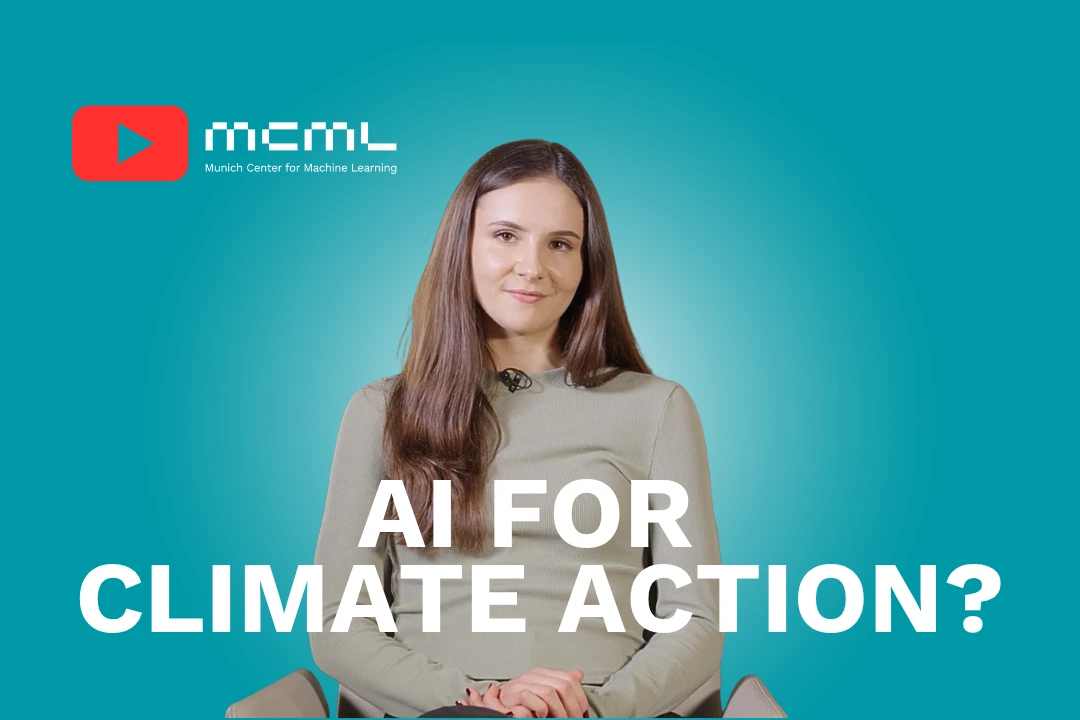
29.09.2025
Machine Learning for Climate Action - With Researcher Kerstin Forster
Kerstin Forster researches how AI can cut emissions, boost renewable energy, and drive corporate sustainability.
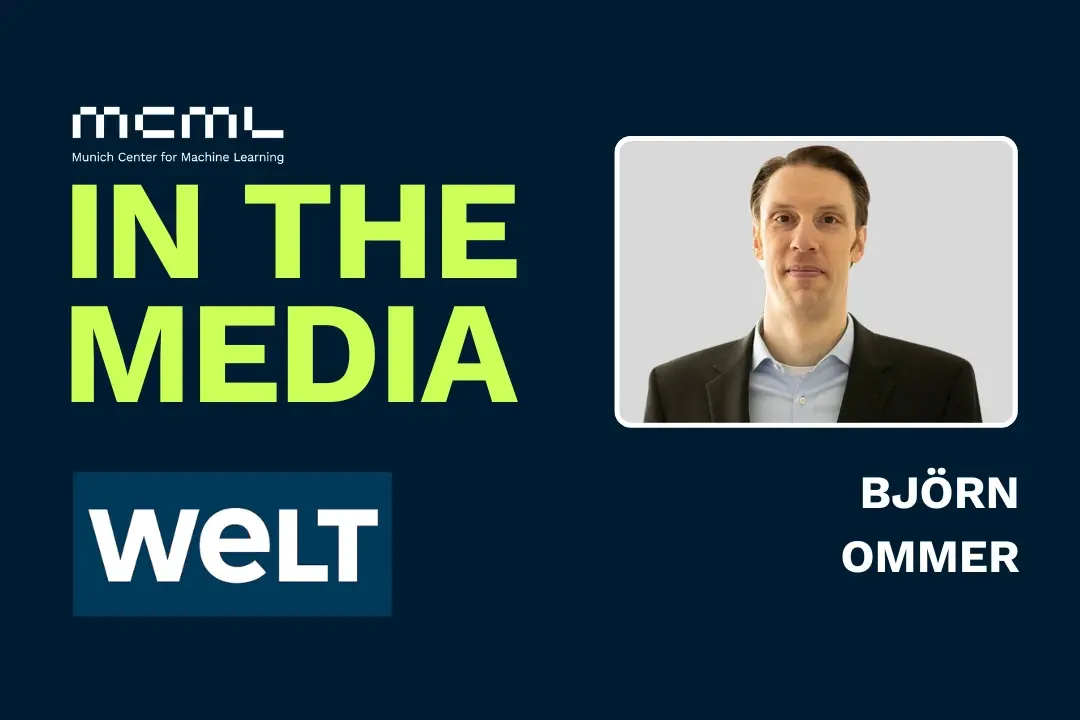
26.09.2025
Björn Ommer Featured in WELT
MCML PI Björn Ommer told WELT that AI can never be entirely neutral and that human judgment remains essential.
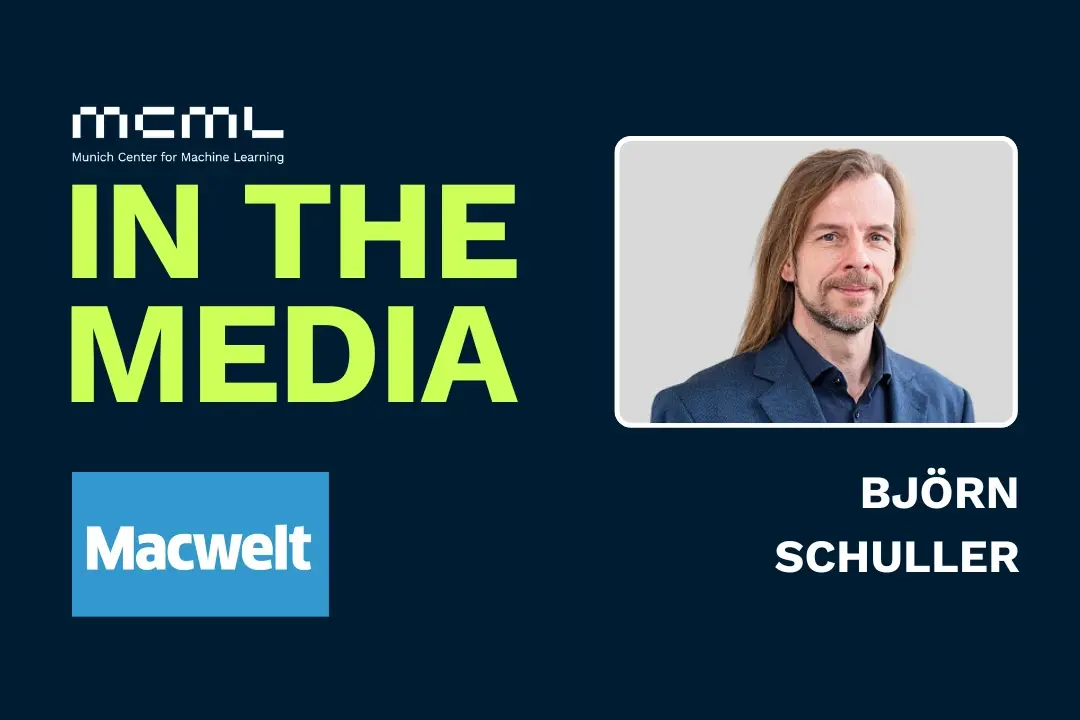
25.09.2025
Björn Schuller Featured in Macwelt Article
MCML PI Björn Schuller discusses in Macwelt how Apple Watch monitors health, detects subtle changes, and supports early intervention.
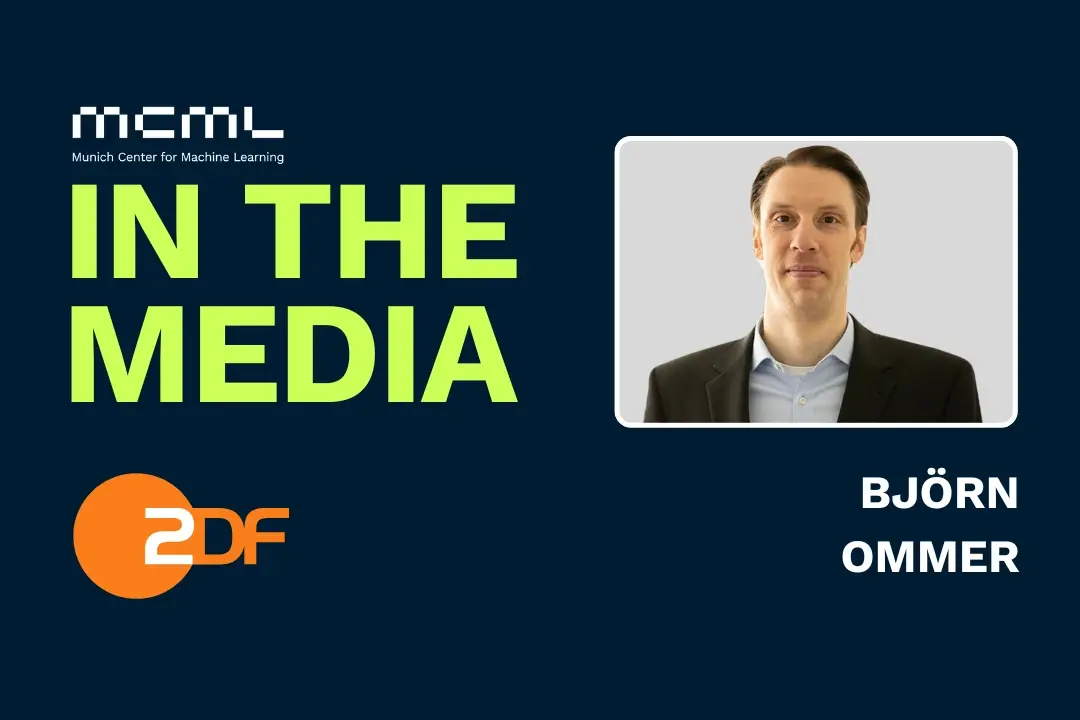
24.09.2025
MCML PI Björn Ommer Featured on ZDF NANO Talk
MCML PIs Björn Ommer & Alena Buyx discuss AI’s essence on ZDF NANO Talk, covering tech, ethics, and societal impact.
